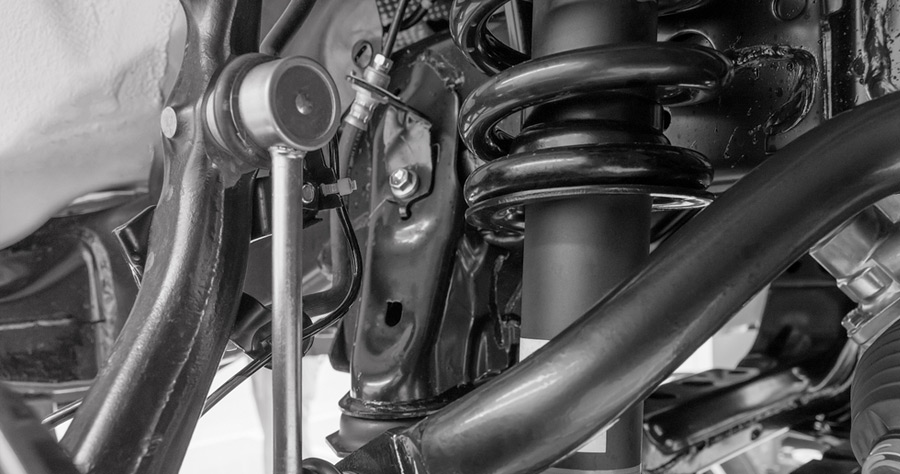Auto & Truck Shocks and Struts
A vehicle’s suspension system does just that: it suspends the car or truck’s body over the wheels. The arrangement provides ride comfort and also allows the vehicle to handle more accurately and, as a result, more safely.
Accelerating, braking and turning are all affected by a vehicle’s suspension. Shocks and struts are critical components of the system because poorly performing ones can result not only in compromised handling but also in excessive wear on other suspension parts.
A strut is really several parts in one,. The shock, spring, mounting and suspension bushings are all part of it. Some vehicles may have two shocks and two struts. Some may have four shocks, and others have four struts.

When to Replace Shocks and Struts
Although there’s no disputing the importance of a properly functioning suspension system, knowing when to replace shocks and struts can be challenging. The old shortcut, pushing down on a corner of the vehicle and watching for bouncing, won’t tell the whole story. Plus, slow and gradual wear on suspension components makes it hard for drivers to detect changes in ride and handling. But worn shocks or struts can prematurely wear brakes, suspension bushings, ball joints, tie-rod ends and even parts like CV joints that deliver power to drive wheels.
Even front brake pads will wear exponentially quicker [on a vehicle with worn shocks or struts] because, as you stop, more of the weight is being transferred to the front wheels. So instead of the front brakes handling 60-70% of the stopping power, they’re handling 80-90%.
A lot of research has been done on shocks and struts. For a 50,000-mile lifespan, it’s estimated that they’ve worked 80 million times. At that point, they’re worn out and not working like they should.
New shocks or struts can keep other parts working properly while also contributing to better ride and handling. That floating ride characteristic of extremely worn shocks not only induces nausea in passengers. It’s also a safety concern because the vehicle’s body will pitch and roll more when cornering and braking. The firmer ride that results from replacing worn shocks or struts restores that precise, new-car handling feel.





